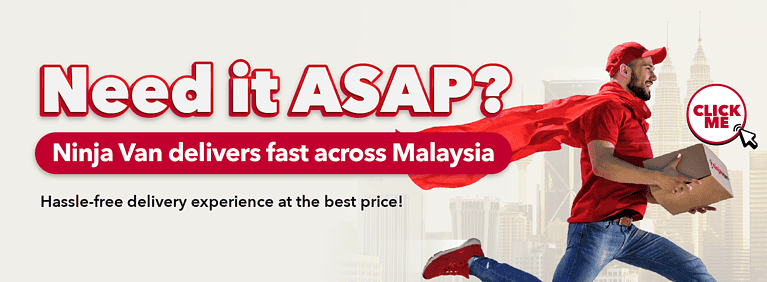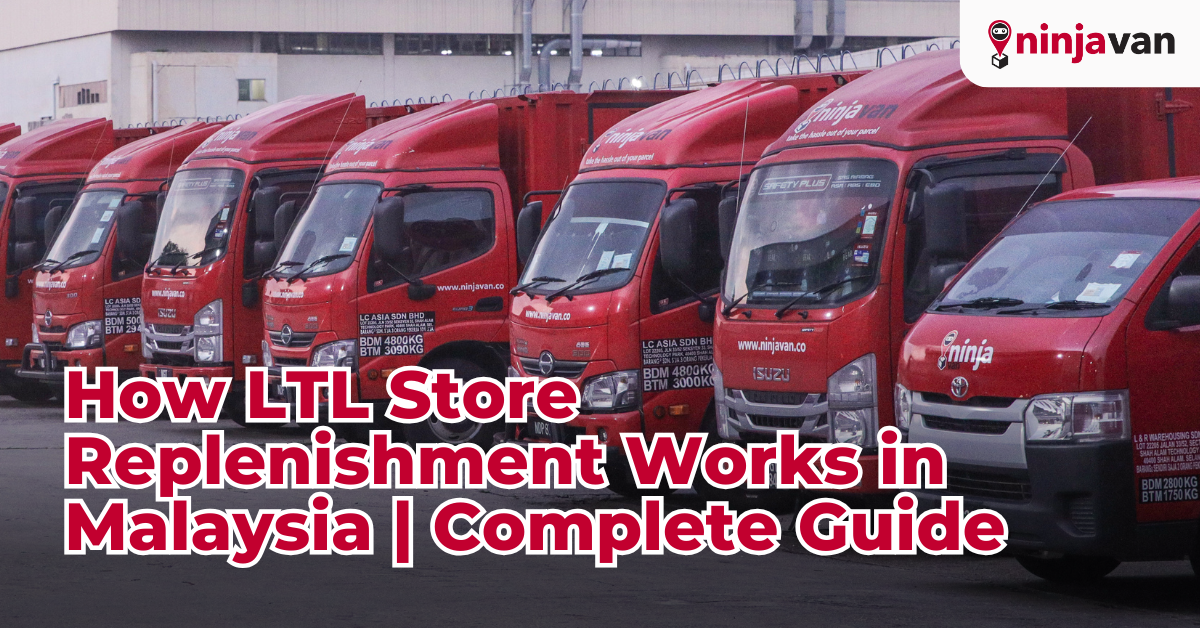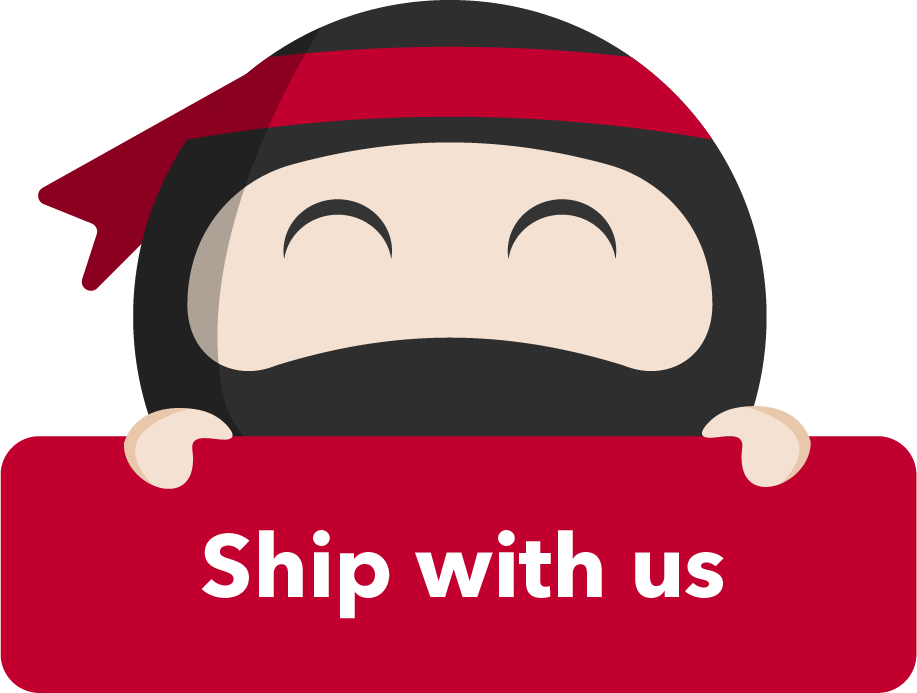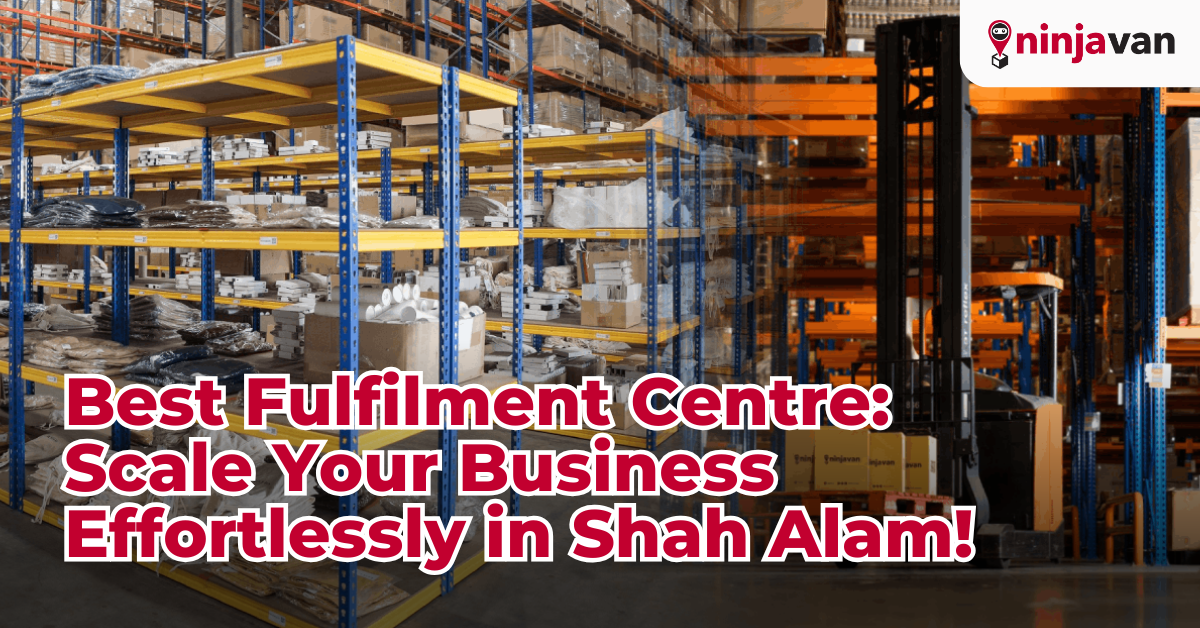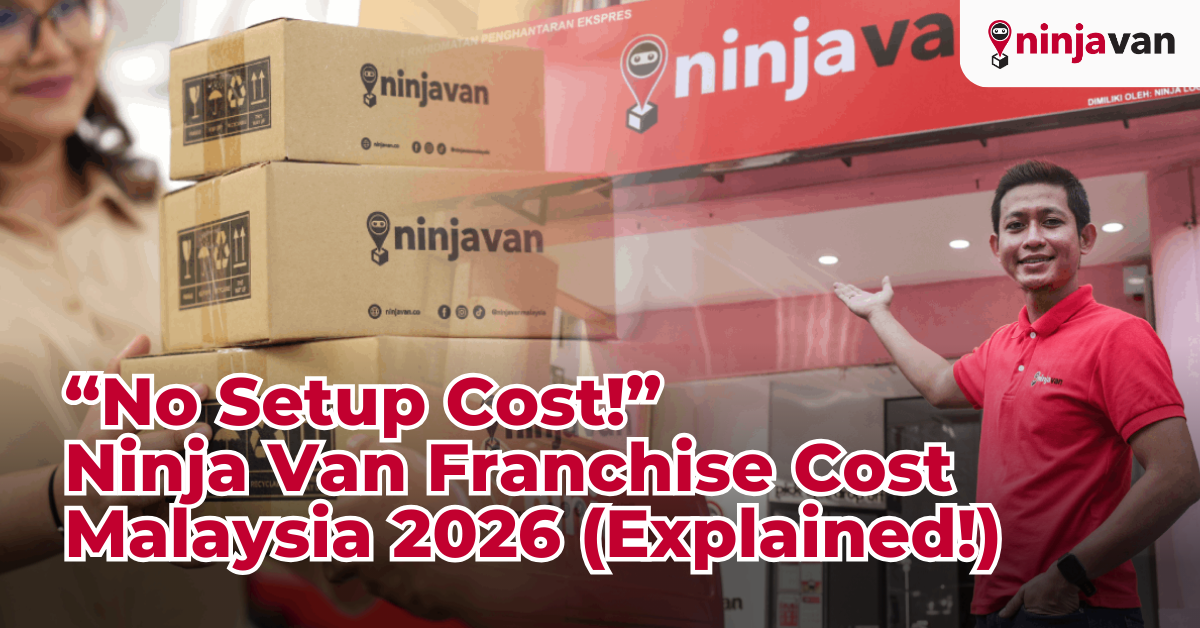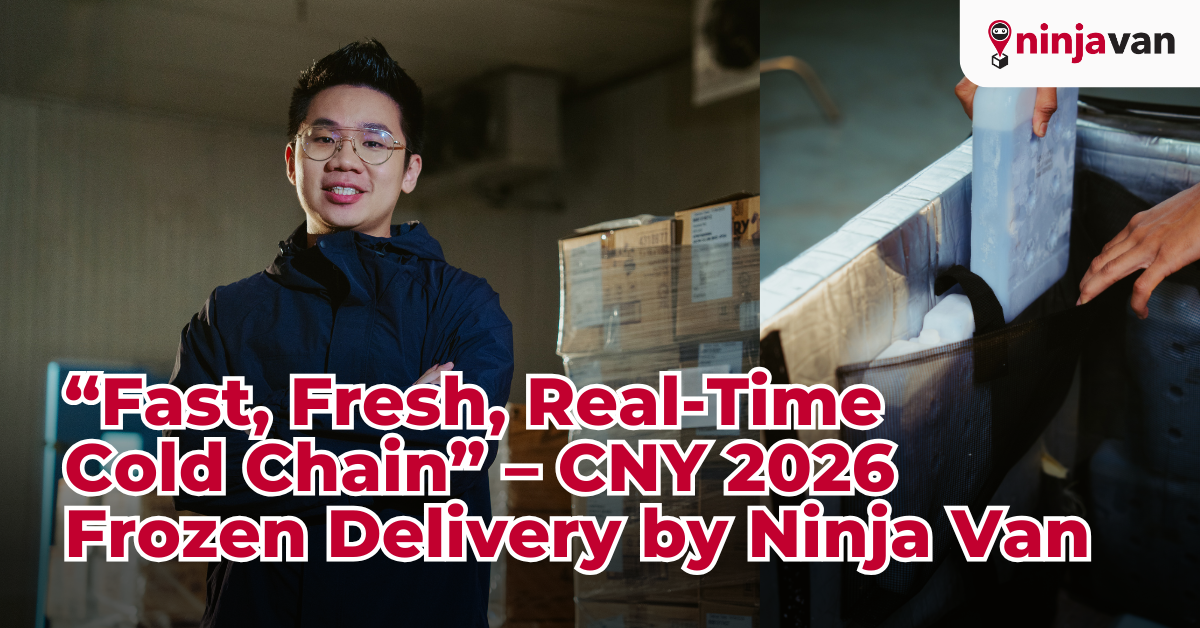From FMCG giants to emerging e-commerce brands…
…maintaining optimal inventory at retail stores is critical. Running out of stock leads to lost sales, while overstocking ties up valuable cash and storage space. That’s where Less-Than-Truckload (LTL) store replenishment comes in: an efficient logistics model to move inventory from warehouses (like outsourced warehousing) or distributors to stores or outlets without requiring a full truckload.
If you’ve looked at services like Ninja Restock (“Retail Inventory Restock”) you know the basics: restocking cartons, flexible MOQ, real-time tracking, etc. But there’s more to understand; the terminology, how the process really works end-to-end, what benefits versus trade-offs are, and how to pick the right partner.
This post gives you those extra insights.
🌍 Terminology: Key Terms & Definitions
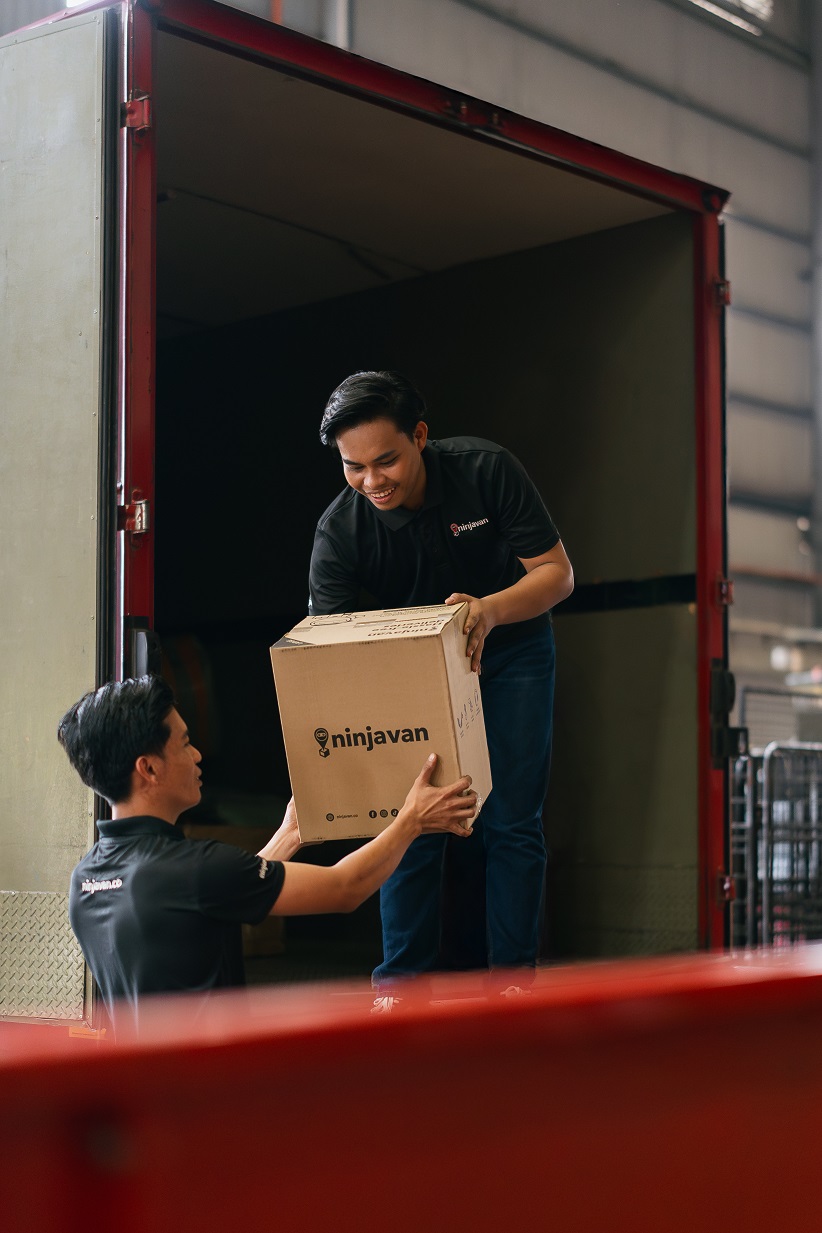
To talk clearly about store replenishment in Malaysia (or any market), it helps to know these terms:
| Term | Definition |
|---|---|
| LTL (Less-Than-Truckload) | Shipping method where you don’t need to fill an entire truck. Multiple shippers’ goods are consolidated. Cost-efficient for moderate volumes. |
| MOQ (Minimum Order Quantity) | The smallest order size (in cartons, CBM, or weight) that a service provider accepts. Helps them plan load & route efficiency. |
| CBM (Cubic Metre or Cubic Meter) | A measure of volume (length × width × height) used in shipping. Many LTL or restock services price by CBM rather than just weight. |
| PO (Purchase Order) | The document/order from retailer/brand to supplier or warehouse showing products to ship, quantities & required delivery dates. |
| GRN (Goods Receipt Note) | A document confirming the goods have been delivered/received, ideally signed off at the store or warehouse. Important for reconciliation and inventory control. |
| RDO (Route Delivery Optimisation or Route Drop Off) | Planning the best route to serve multiple outlets in one trip, minimising travel distance/time, fuel, and cost. |
| MPS (Multi-Point Scheduled or Multi-Point Service) | Regular scheduled deliveries to multiple drop-points (e.g. stores) across one route or set of routes. Ensures consistency. |
| 3PL (Third-Party Logistics provider) | An external company that manages logistics functions (transport, warehousing, fulfilment) on behalf of retailers or brands. |
| Cold-chain logistics | Temperature-controlled transport for perishable/frozen items. Different rules and cost structures. |
⚙️ How It Works: Step-by-Step Process of LTL Store Replenishment in Malaysia
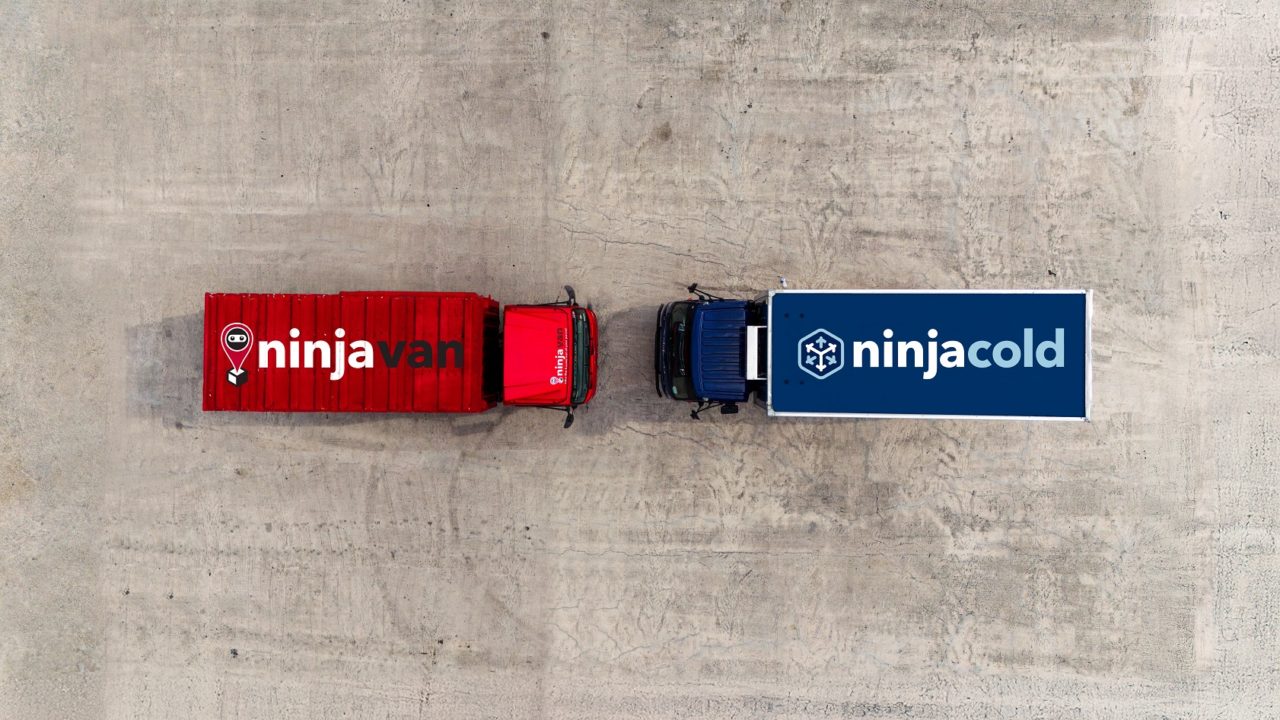
Here is a more detailed view of how store replenishment works, especially using an LTL model, enriched by what services like Ninja Restock provide, but also general best practices:
Demand & Inventory Forecasting
Retailers/brands estimate what stock will be needed at each store over a period (weekly, bi-weekly). Data inputs: historical sales, promotions, seasonality (e.g. Chinese New Year, Ramadan), lead times, buffer stock.
Read more: Sales Forecasting: Domino Effect of Misjudged Demand
Purchase Order (PO) Creation & Consolidation
Once you know what’s needed, you issue POs to your warehouse (be it in-house or outsourced warehousing) or supplier. Sometimes multiple POs are consolidated if going through same logistics path or same destination region to improve efficiency.
Packing & Preparation
Goods are packed into cartons, labelled clearly (SKU, quantity, destination store). Proper packaging is crucial to reduce damage, ensure correct items are delivered. For perishable or sensitive goods, compliance with cold-chain is needed. Ninja Restock supports ambient goods primarily; cold/frozen use separate service (Ninja Cold).
Loading & Consolidation into LTL Shipments
Because stores often don’t require a full truck, shipments are combined with others heading in similar routes. The logistics provider consolidates multiple customers’ shipments or multiple stores’ shipments into one vehicle, optimizing space (CBM), route, and cost.
Transport & Route Optimisation
The LTL provider plans the most efficient route(s), possibly using MPS (scheduled multi-point delivery) to cover many stores in one go. Drop-offs are sequenced to reduce back-tracking. Providers may offer daily or scheduled services per route. Lead times often 1-3 working days in Malaysia (for ambient goods) given distances and road/infrastructure conditions.
Delivery & Goods Receipt
At each store/outlet, goods are delivered and offloaded. Staff at store verify with PO, count items (sometimes using digital GRN), sign off the Goods Receipt Note. Any discrepancies or damages noted. This final check is critical for inventory accuracy.
Tracking & Visibility
Modern logistics providers offer tracking (pickup → en route → delivery), dashboard visibility, alerts for exceptions (delays, damages). Real-time data helps brands/restaurateurs monitor stock levels and avoid stockouts. Ninja Restock offers real-time tracking and digitised GRNs.
Reconciliation & Feedback Loop
After restock, review how actual delivery vs expected performed: were POs filled? Was lead time met? Any damage? Then feedback influences future orders, pack methods, route scheduling. Also adjust safety stocks if needed.
📞 Curious how this process would look for you? Talk to a logistics partner today and map out your first replenishment run.
🔥 Benefits vs Trade-offs
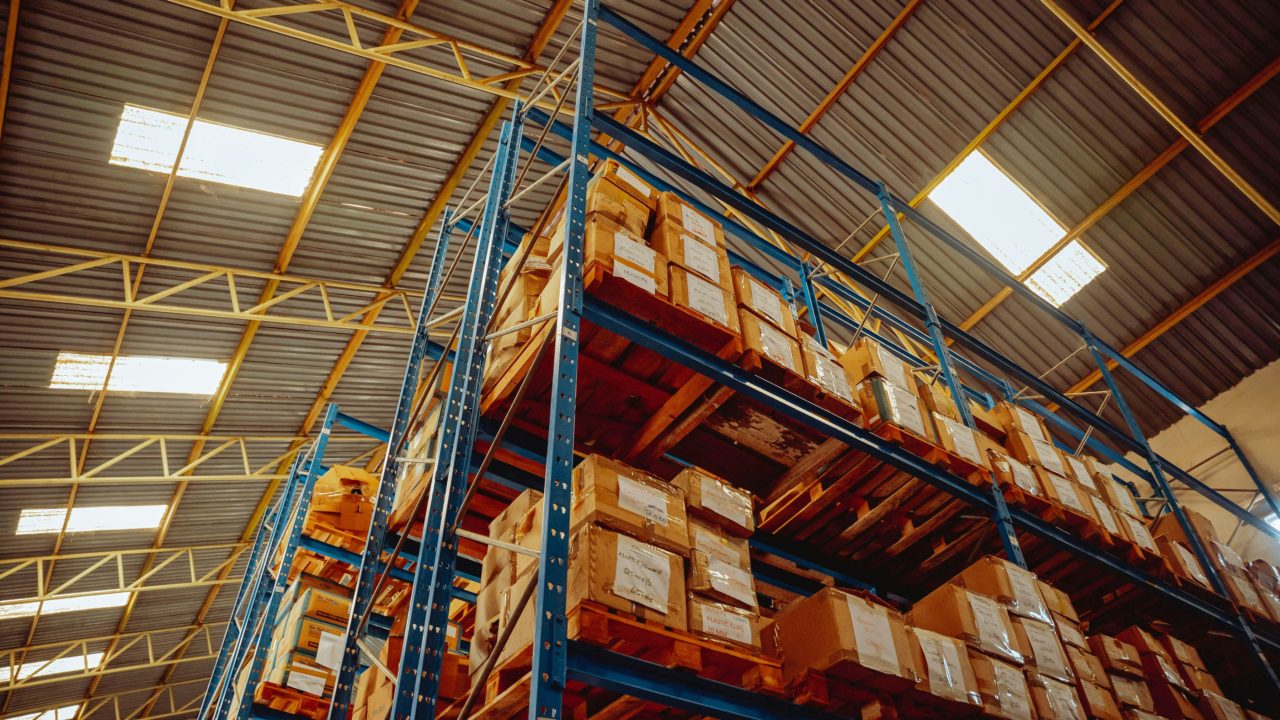
Knowing what benefits LTL store replenishment brings, and its trade-offs, helps you decide if it’s right for your business, or how to use it optimally.
| Benefits | Trade-offs / Considerations |
|---|---|
| Cost efficiency – Sharing transport & route rates; paying for only what you use (CBM, cartons) rather than full trucks. | Loading constraints – you may have less priority if your shipment is small; risk of delays if consolidated with many others. |
| More flexible MOQ – You don’t need huge volumes to get service; useful for smaller stores. Read more: “Faster Restocks, No MOQ” – Ninja Van MY’s Loose Carton Solutions | Longer transit times than full-truckload for some remote/outlying locations, due to multiple stops. |
| Inventory consistency – scheduled restocks help avoid stockouts; smoother supply chain. | Coordination overhead – more POs, packing, tracking & dealing with multiple drop-offs increases operational complexity. |
| Reduced capital tied up in stock – smaller replenishment batches reduce holding costs. | Risk of damage or misdelivery more than in a dedicated full truck; more touchpoints = more possibilities for error. |
| Scalability and visibility – ability to service multiple outlets, even remote, with logistical transparency. | Cost per unit may be higher for very small loads or remote delivery vs centralised larger shipments. Read more: CBM Vs. Traditional Truck Size Pricing |
🔥 How Ninja Restock works? Read more: What Is Ninja Restock? Retail Inventory Replenishment with Ninja Van
👋 FAQs
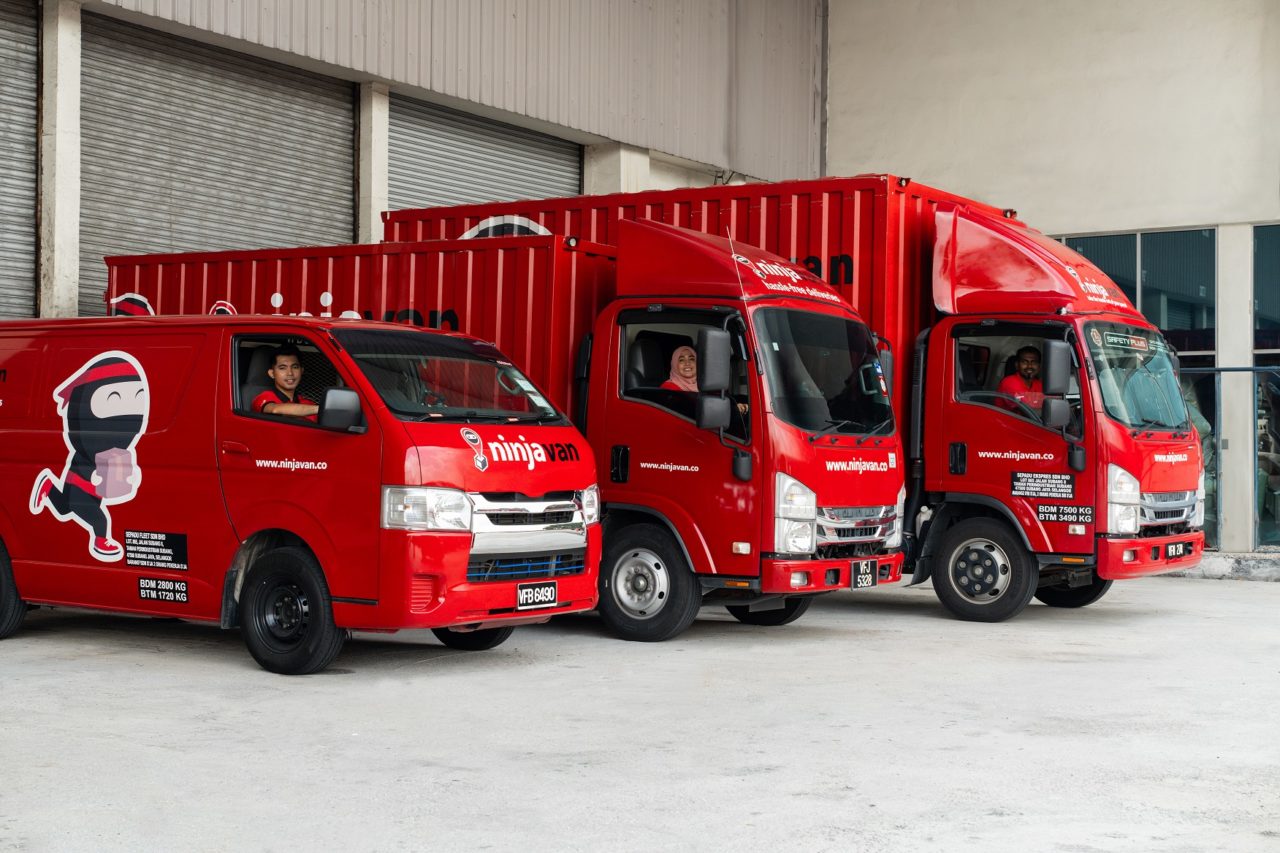
Here are answers to common questions businesses have when considering LTL store replenishment in Malaysia.
-
Generally ambient goods—non-perishable consumer goods, FMCG, retail fashion accessories, cosmetics (if not temperature sensitive), hardware, etc. If you have perishables/frozen goods, you need a cold chain specialist service. Ninja Restock supports ambient, while Ninja Cold handles refrigerated/frozen.
-
For LTL restock in Malaysia, 1-3 working days is common for many routes in peninsular Malaysia and major islands. Deliveries to remote/rural areas (especially East Malaysia or inland sites) may take longer. Scheduled daily or weekly feeds improve reliability.
-
Many providers offer flexible MOQs, especially when pricing by CBM rather than by carton or weight. There is often a minimum CBM or carton count below which surcharge or less favourable rates apply. Ninja Restock offer flexible MOQ.
-
In LTL restock, pricing can be based on a mix of: CBM, weight, distance, number of drop-off points, route complexity, urgency of delivery. Also, value-added services (GRN handling, cold chain, fragile handling) cost extra.
📞 Contact us today to get a pricing quote for Ninja Restock! -
Good providers give full visibility allow you to monitor the shipment journey. For Ninja Restock, we enable transparency via dashboards. For damage/loss, you’ll need clear documentation (packing list, GRN), sometimes insurance or limited liability cover. Ninja Restock give instructions on packaging and labelling to minimise damage risk.
-
Schedule options with Ninja Restock are usually daily, weekly, bi-weekly, or on demand depending on your volume and service provider capacity. Scheduled restock helps avoid stockouts and plan cash flow. Ninja Restock supports scheduled or recurring deliveries.
📞 Still have questions? Reach out to a logistics expert and get answers specific to your business.
👥 Use Cases
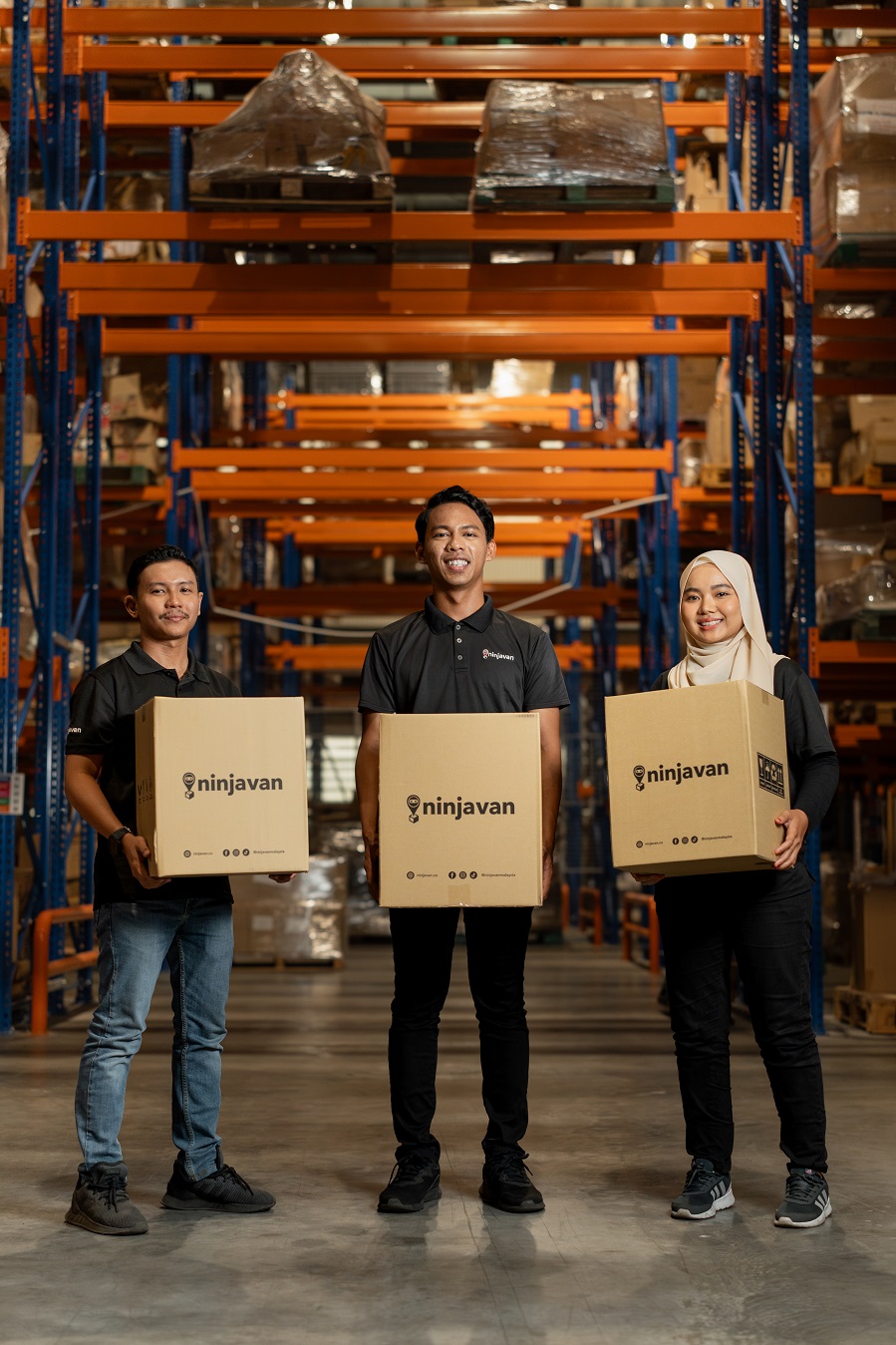
Here are real-world use cases to illustrate how this works in Malaysia across different industry types:
| FMCG Brands with Many Retail Outlets | Beauty & Cosmetics Retail Chain | Small Retailers / Convenience Stores in Rural Areas | E-Commerce Brands Doing Pop-Ups or Multi-Outlet Sales |
| A snack food brand has 200 mini marts across Klang Valley plus East Malaysia. They set up weekly LTL restock with shared routes. Uses CBM pricing, consolidates POs, uses just-in-time inventory to avoid overstocking warehouses. | With many SKUs and small carton sizes, full truckloads are wasteful. They use LTL restock to send small batches, shelf-ready cartons, direct to store. They benefit from route drop-offs and use digital GRN to manage returns/damages quickly. | A network of convenience stores in remote districts needs steady restock. LTL providers with wide coverage help deliver regularly rather than forcing lumpy shipments. Even though delivery cost per unit is higher, consistency improves sales and reduces stockouts. | E-commerce brands selling at pop-ups or multiple outlets use restock to move goods quickly from fulfillment centres to store or pop-up locations. LTL allows them to avoid maintaining large local stock. 🧐 Did you know? Ninja Van offers a full-scale fulfilment & warehousing services that’s inclusive of last-mile delivery. Read more here. |
🎯 Key Takeaways
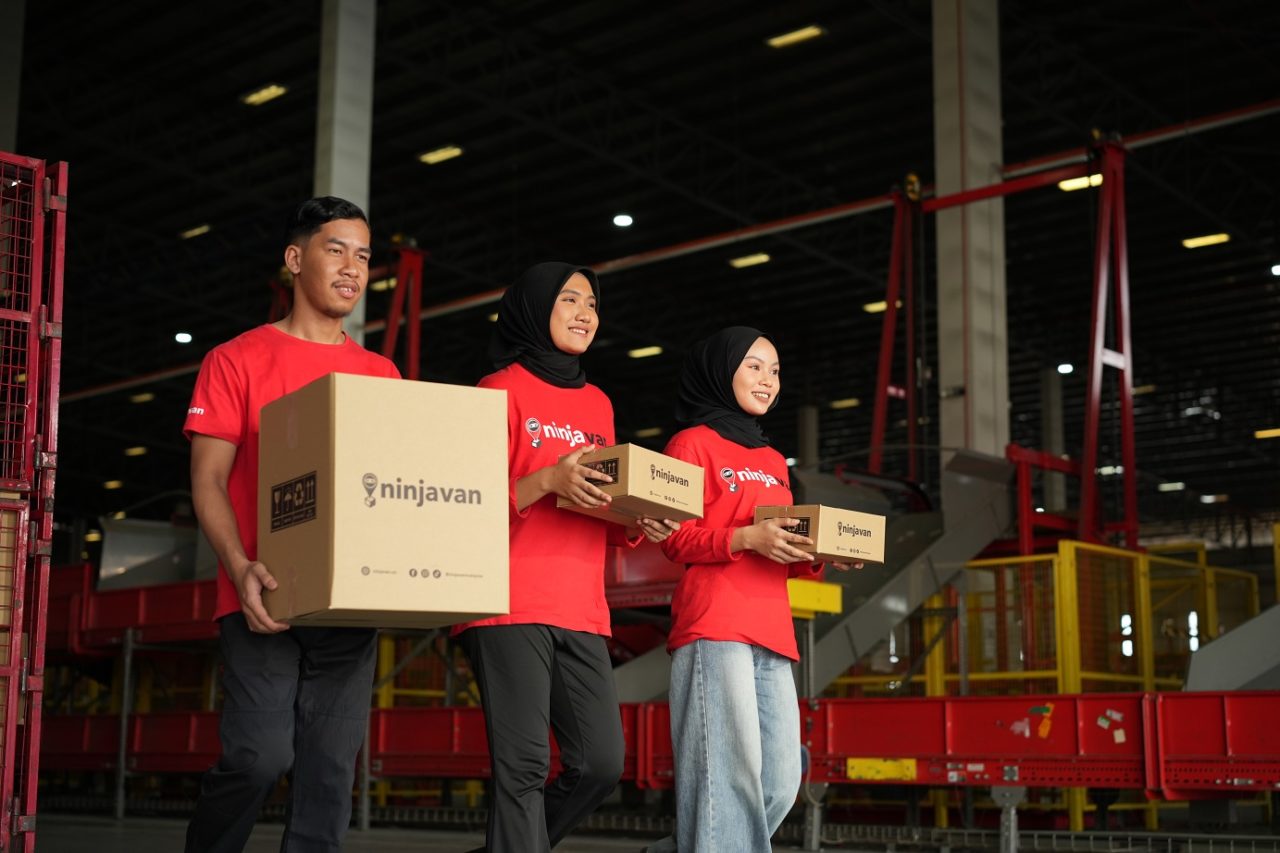
- LTL store replenishment is ideal for brands/retailers who need consistent restocking of stores without filling full trucks — you pay for the space you use.
- Understanding MOQ, CBM, route optimisation, and goods receipt processes (like GRN) is crucial for cost‐efficiency and accuracy.
- There are trade-offs: cost vs speed, complexity vs flexibility. It’s all about finding the balance that matches your business scale, distribution footprint, and product type.
- Use visibility tools (dashboards, real-time tracking) and work with providers that give robust service levels and clear liability handling.
- Scheduled and regular restock (MPS) and route planning (RDO) are your friends when it comes to reliability and cost control.
📞 Want a pricing quotation? Reach out to us, trusted 3PL provider!
💡 Benefits vs Trade-offs Revisited

To reiterate in brief:
- Benefit: Lower overall shipping cost per carton, more frequent restocks, more flexibility.
- Trade-off: Possibly slower for remote locations; more handling may increase risk; small orders may bear surcharges.
Always compare providers on transparency (how clear are their rates, liability, schedule), coverage (are all your stores reachable), and technology (can you track, get data, do GRNs digitally).
🔎 Let’s Put You as an Example!
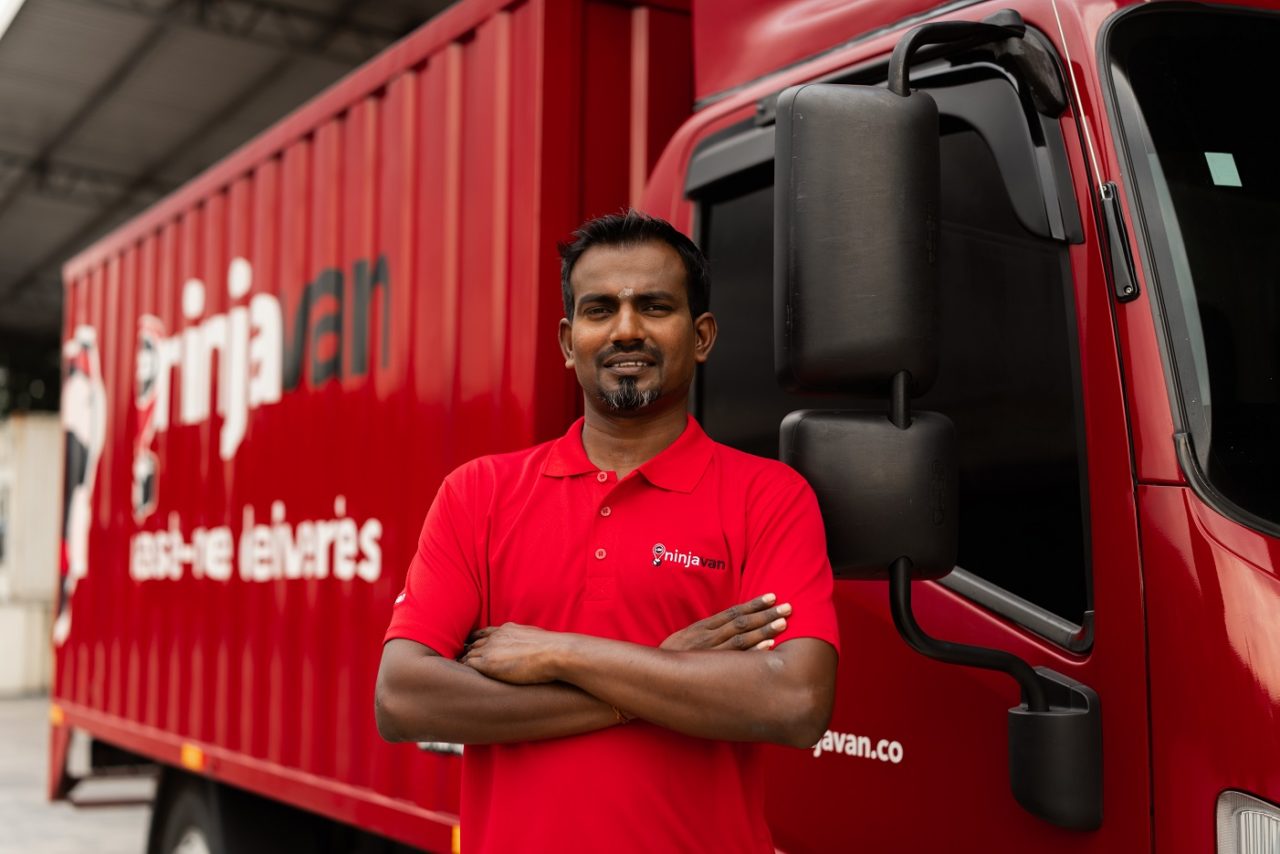
Suppose you’re a cosmetics brand with stores in Kuala Lumpur, Penang, Johor Bahru, and East Malaysia.
You have ~500 SKUs, many of them slow movers. Full truckloads would leave many empty spaces. With a partner that does LTL restock:
- You plan weekly deliveries;
- You consolidate SKUs by region;
- You send ambient SKUs via LTL restock and perishable ones via cold chain when needed;
- Use GRN & dashboard tools to close off orders quickly;
- Avoid emergency freight because stockouts are reduced.
🔥 Read more on how GRN, RDO and MPS work in practice: What Are GRN, RDO, and MPS in Logistics?
🤝 Ready to Optimise Store Stock and Always Stay in Stock?
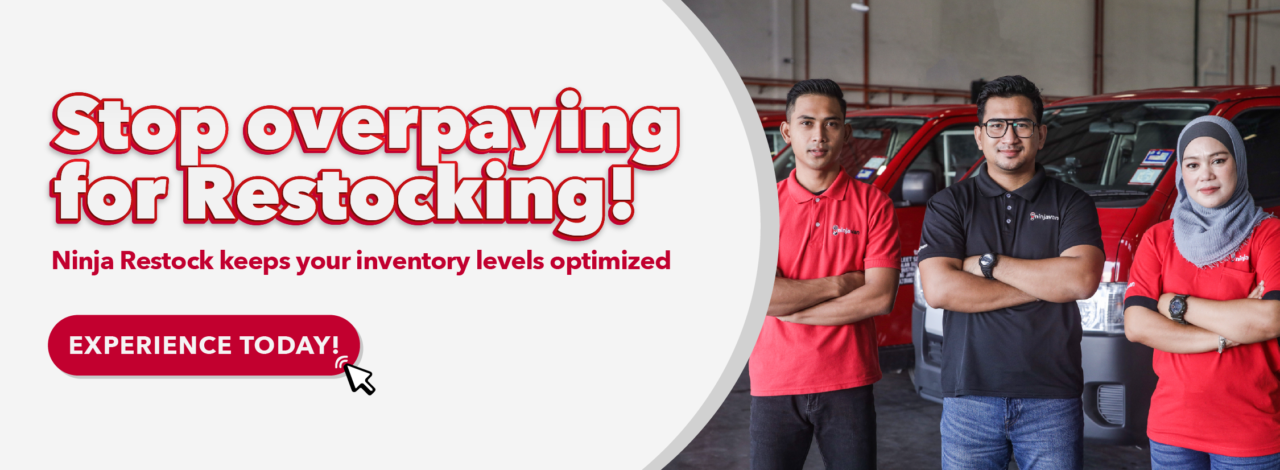
Start now by contacting a restock-specialised 3PL in Malaysia and discussing your MOQs, CBM needs, and delivery routes!
